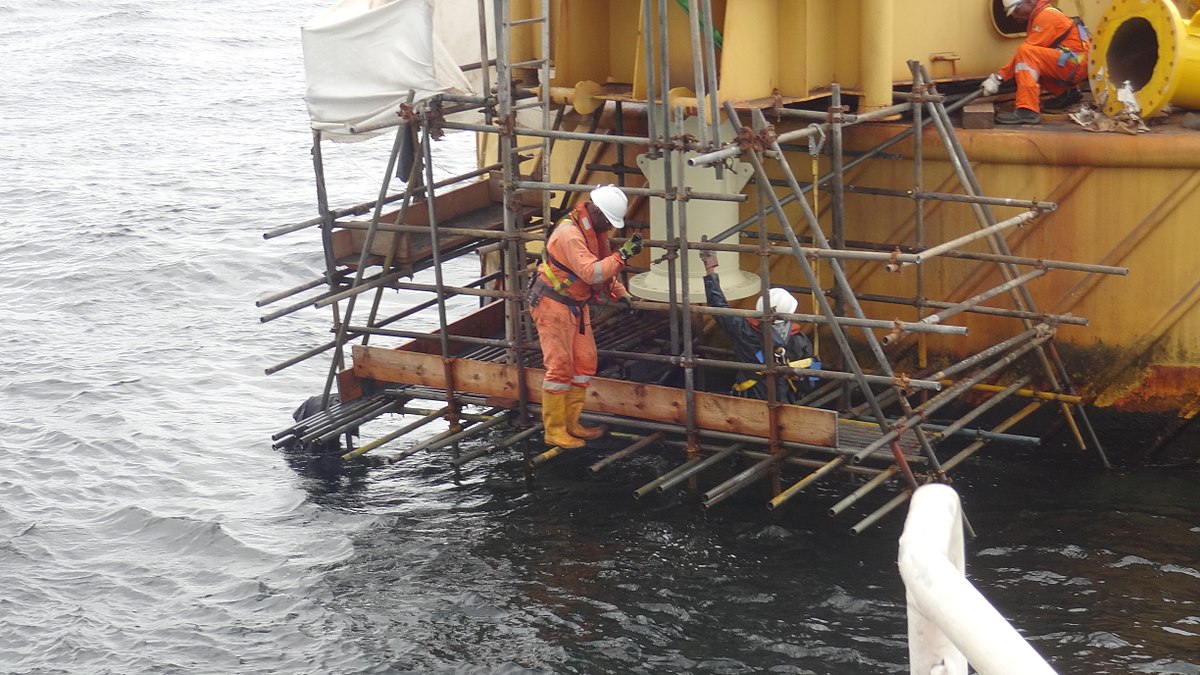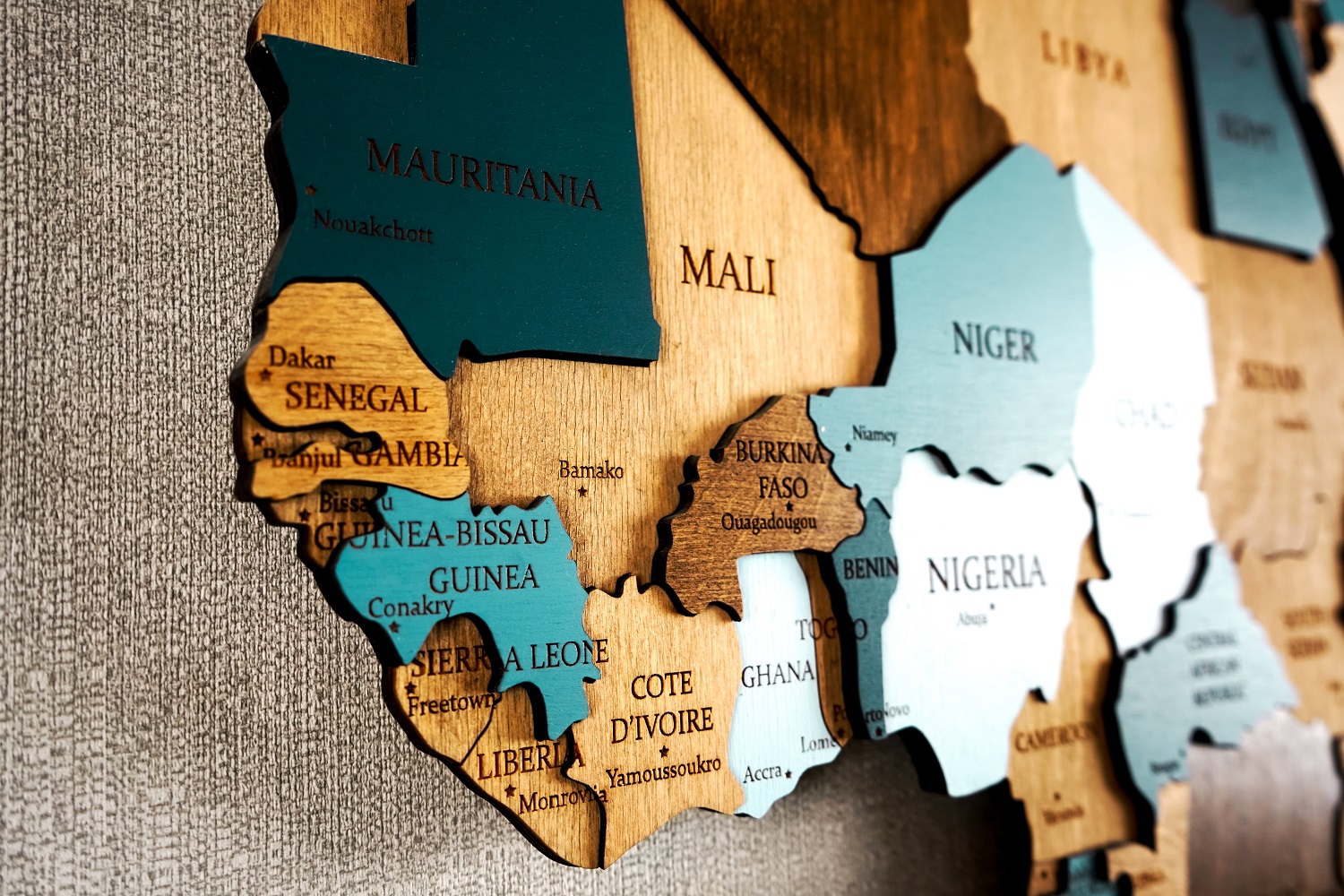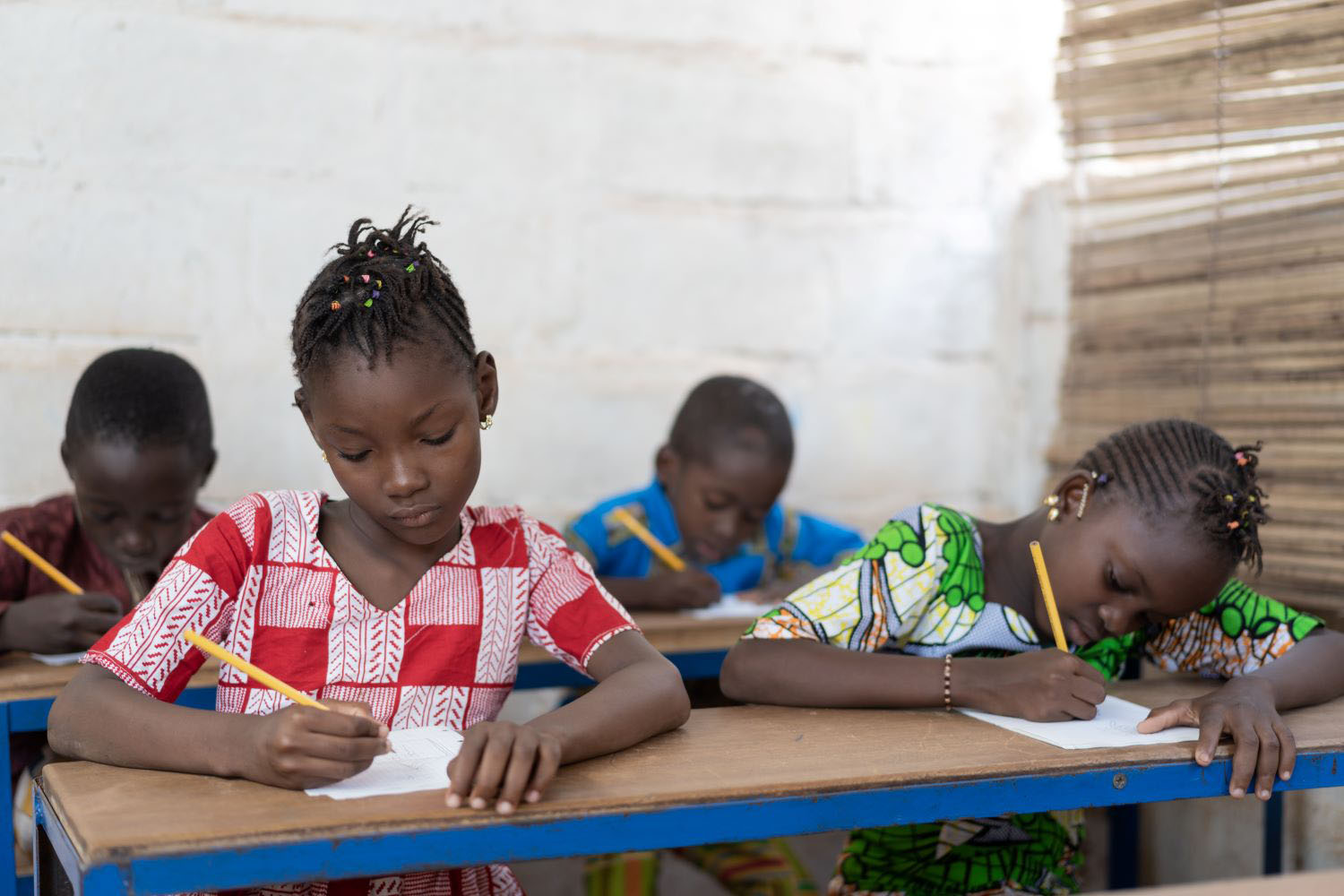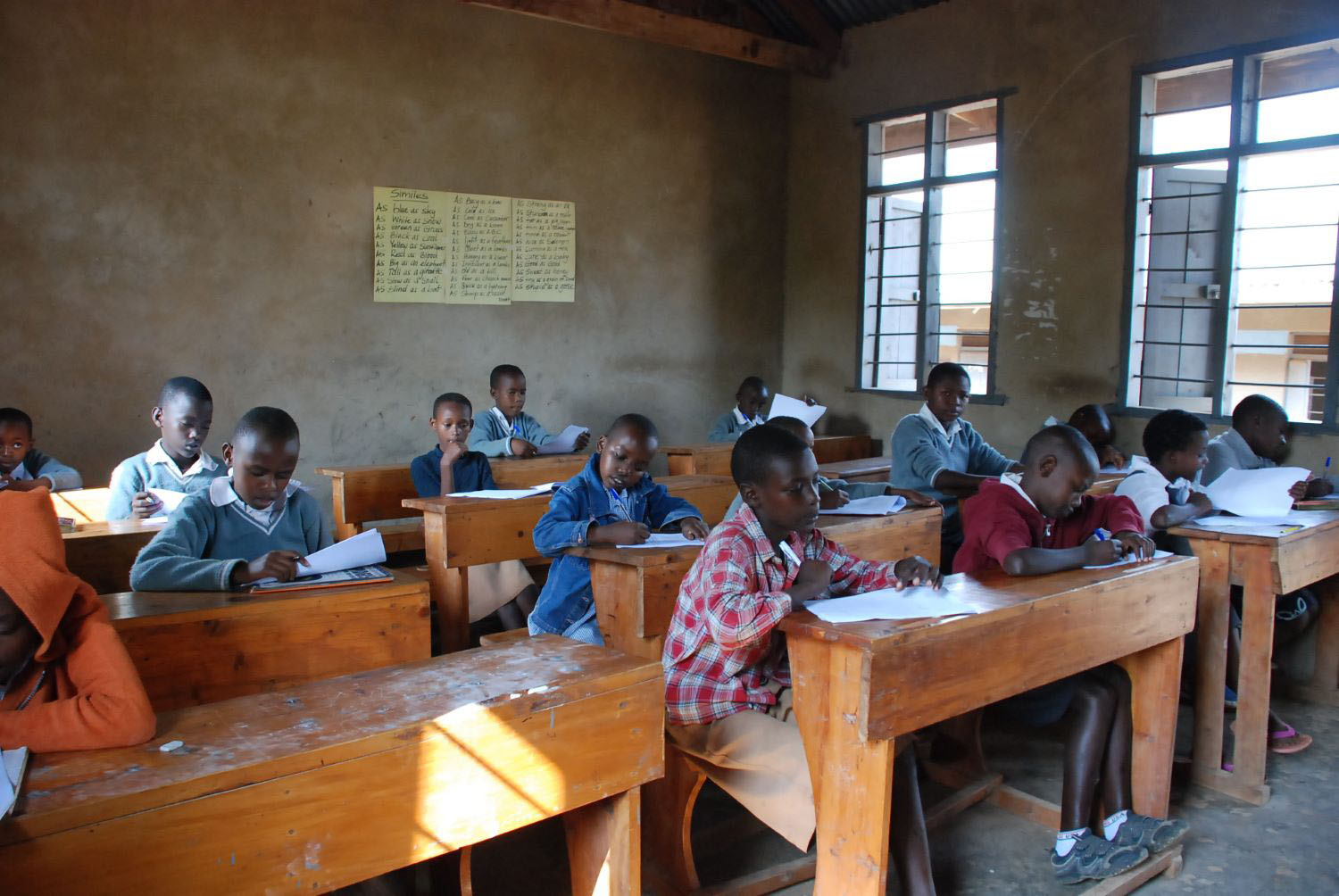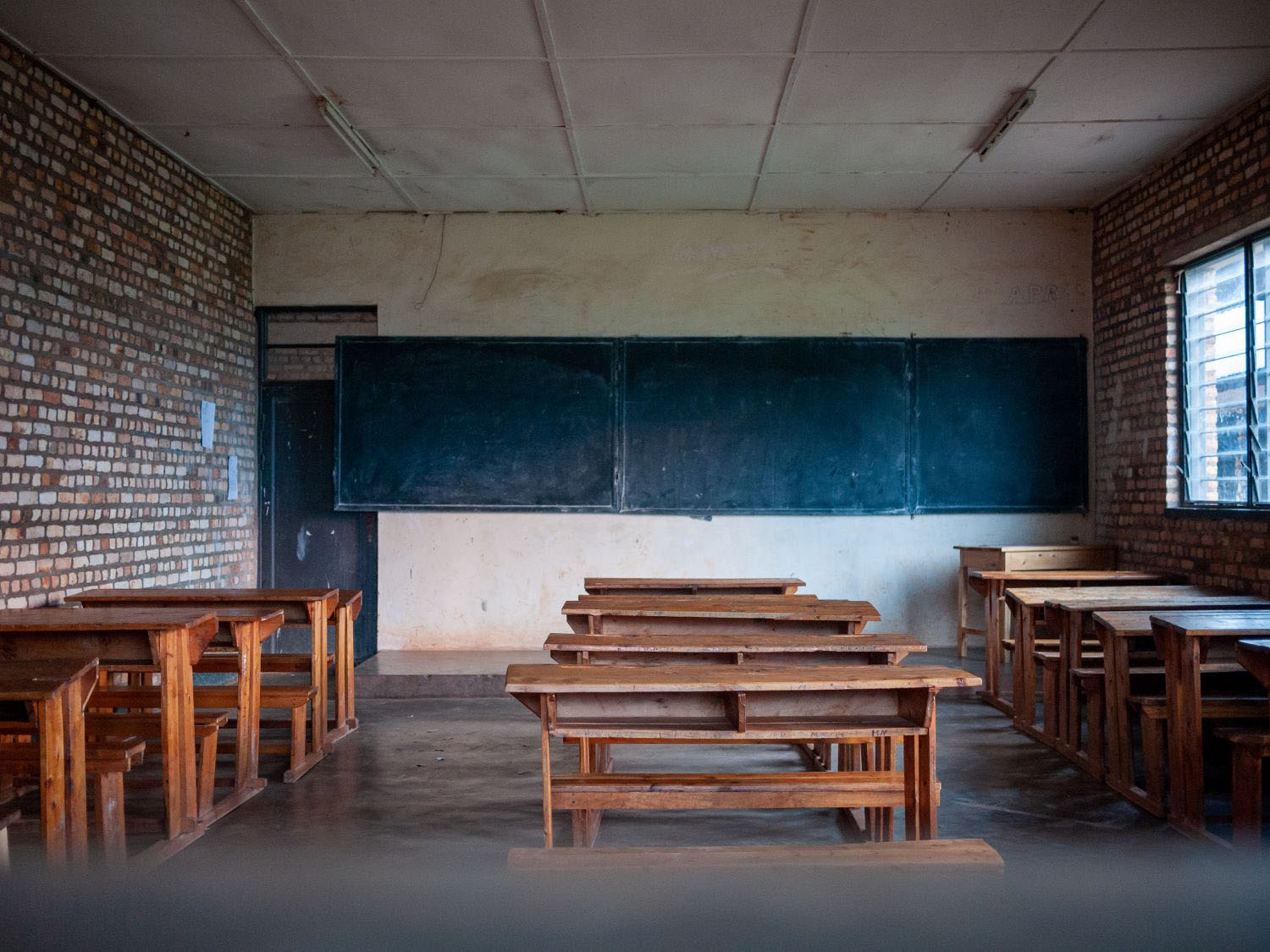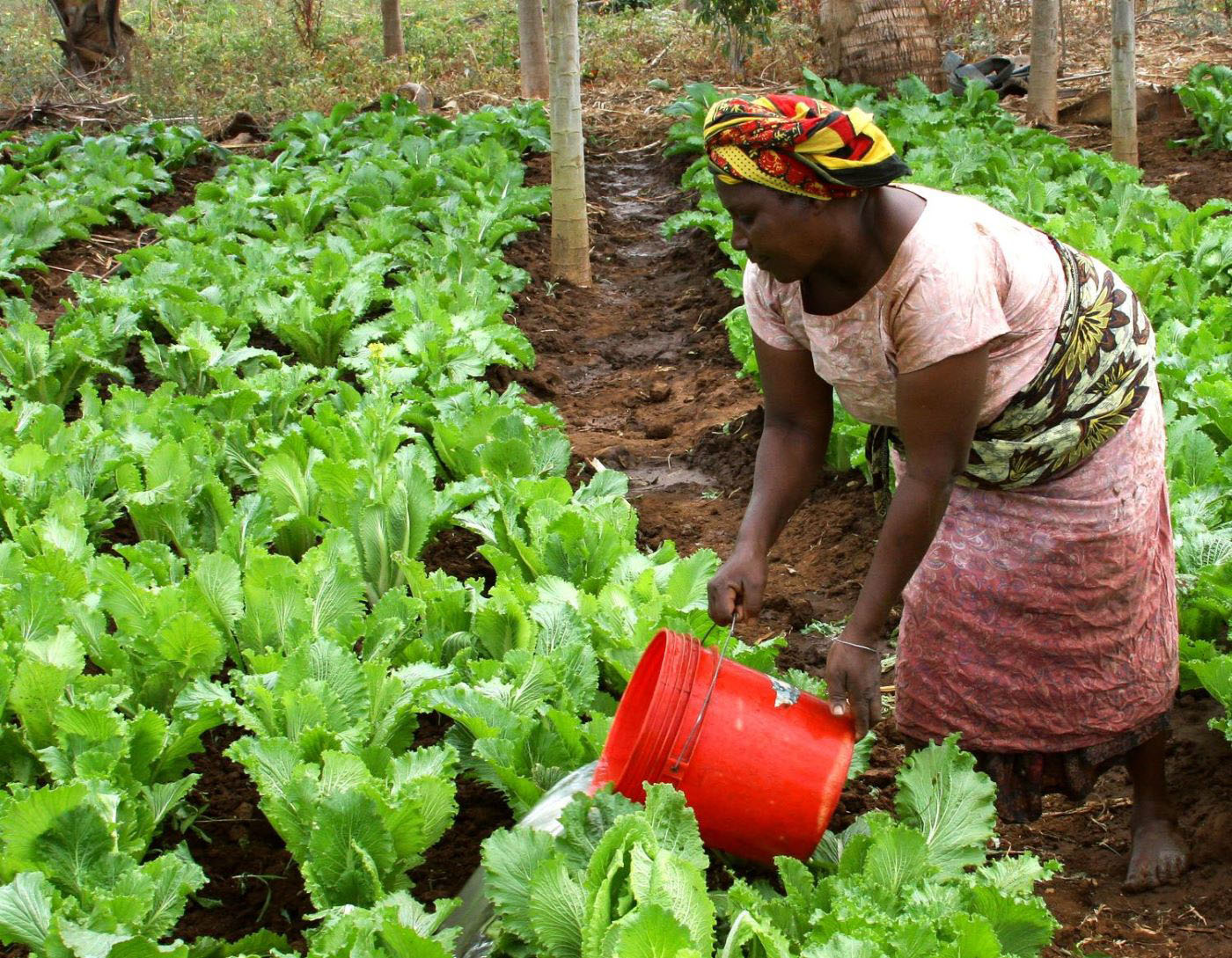The Africa Growth and Opportunity Act (AGOA) is due to expire in 2025, a quarter of a century after it was first enacted. AGOA provides qualifying sub-Saharan African countries with duty-free access to the US market for most agricultural and manufactured products. Its architects and supporters point to AGOA’s noble motives and success stories; indeed, the case for access to large regional and global markets that support critical levels of transformative investment is eternal. But while AGOA remains relevant, it is grappling with overdue reforms and rapidly changing circumstances. Despite progress under the African Continental Free Trade Area (AfCFTA), which aims to create a single continental market for goods and services, the region’s US-bound exports face the inevitability of eroding preferences since the US has concluded over 20 free trade agreements. Furthermore, China is playing an ever-expanding role in Africa’s trade and investment landscape. To be consequential to Africa and the United States, a successor program to AGOA will need to be appropriately designed.
The US has been open about Africa’s immense importance and potential in the ever-dynamic geopolitical environment of our time. It wasn’t an overstatement when US Secretary of State Antony Blinken declared that “Africa will shape the future—and not just the future of the African people but of the world.” Or as Meg Whitman (2023), the US ambassador to Kenya, compellingly argued in a recent statement, the continent is teeming with lucrative opportunities that US private companies cannot afford to miss, to build both Africa and the US. As the new US Strategy Toward Sub Saharan Africa (August 2022) points out, 25 percent of the world’s population will be African by 2050, Africa has the second largest rain forest and 30 percent of the critical minerals of the world, and African countries form the largest voting group in the United Nations, with 28 percent of the vote.
The US Strategy Toward Sub Saharan Africa defines a US-Africa partnership for the 21st century based on revamped public diplomacy efforts, support for sustainable development and resilience, refined defense tools, strengthened trade and commercial relations, digital transformation and a focus on urban hubs. Trade and commercial relations will prioritise agribusiness, energy, entertainment, healthcare, and technology, and will facilitate sectors that are critical for Africa’s economic transformation. The AfCFTA Private Sector Strategy has identified four initial such critical sectors (agro-processing, automotives, pharmaceuticals, transport and logistics) (AfCFTA and WEF 2023)—while a study by the United Nations Development Programme (2021) has recommended 10 sectors (automotives; leather and leather products, cocoa; soya; textiles and apparel; pharmaceuticals; vaccine manufacturing; lithium-ion batteries; mobile financial services; and cultural and creative industries). US support for these sectors, in line with the 21st century partnership, would be transformational, while always bearing in mind that it is not a closed list—economies grow faster by introduction of ever new products and industries through innovation.
Yet Mangeni and Mold (2023) point out, using UNCTADStat 2022, that the proportion of US-bound Africa exports declined from 17 percent in 2000 to just 6 percent in 2019. In contrast, Africa’s exports to China increased from 3 percent to 14 percent over the same period. Also, oil accounted for over 80 percent of AGOA exports, indicating negligible diversification, with Angola’s share at 47 percent. Overall, the AGOA promise of increased diversified exports to support sustainable economic growth has hardly been achieved over the last two decades.
This is not to say that Africa meant to look to either the US or to China and Europe as the region’s sole export markets. Over the past two decades, Africa’s internal market is more promising and is already a leading export destination for some African countries. Specifically, although Africa’s consumer spending represents only 5.5 percent of the global total, the next decade should see a USD 1.8 trillion increase, compared to USD 1 trillion in Latin America and USD 2 trillion in Europe. The World Bank (2022) also estimates that implementing AfCFTA could increase intra-Africa investment by up to 159 percent, lifting at least 50 million Africans out of extreme poverty.
These robust projections make a strong case for US policymakers to consider and support interventions that deliberately address regional economic integration, prerequisite economies of scale for optimal amounts of investment, and transformative industrialization, prerequisites for Africa’s structural transformation, the long-term vision of Africa’s economic integration (Mangeni and Juma, 2018).
Ten recommendations for a more progressive successor AGOA program
To remain relevant and effective in a changing world, AGOA’s successor should learn from the shortcomings of its predecessor. Specific areas for improvement include:
1. Align any successor program with the African Union’s Agenda 2063 and allow market access provisions to expire after 2063, with the achievement of “The Africa We Want”
AGOA is designed to promote export-led growth in Africa. US trade preference schemes elsewhere in the world include the Generalized System of Preferences, the Caribbean Basin Initiative (CBI), and Nepal Trade Preference Program (NTPP). However, unlike other preference programs, AGOA has never been allotted an adequate period of time to attract long-term investment. Unlike NTPP, which was granted a 10-year expiry period in 2016, the perpetual CBI of 1984, and the US-Caribbean Basin Trade Partnership Act, which was updated in 2002 to expire in 2030, AGOA has suffered from uncertainty about when it would expire. As Schneidman and Lewis (2012) noted, AGOA benefits were designed to expire after eight years. These were then extended another seven years to 2015. In 2015, the US Congress gave AGOA its most prolonged period, hoping that by 2025, African beneficiaries would no longer need market access provisions to trade with the US. The intermittency has spelt uncertainty, which hardly promotes long-term sustainable investment. Agenda 2063 is a 50-year blueprint, adopted in 2013 to mark 50 years of the Organisation of African Unity, the predecessor organisation to the African Union, with the vision of an integrated, peaceful, prosperous Africa, driven by its own citizens and an influential force in global relations. It remains the continental rallying call, which informs Africa’s development vision, policies, and strategies. Partners would do well to support it in concrete actions, especially in political and economic relations with African countries.
2. Avoid bilateral trade and investment arrangements and deal with Africa within the framework of the AfCFTA
The era of bilateral trade and investment arrangements between individual African countries and third countries worldwide is over. The advent of the AfCFTA should mean that bilateralism is no longer the main framework for trade with African countries. Instead, partners should understand that, regarding trade and investment rule-making and norms, the AfCFTA is the interlocutor, the framework, and the entity to deal with on the African side. This simplifies and streamlines relations with African countries, as indeed they prefers, and taps into the economies of dealing with one critical entity instead of the balkanized countries on the continent, a colonial legacy to be regretted, not encouraged (Faloyin 2023, EACJ 2019). On the contrary, Luke (2023) has provided an extensive and persuasive case for a new trade deal for Africa as a whole, in terms of unilateral trade preferences, which is difficult to ignore.
3. Support the leapfrogging of Africa’s continental integration into the Common African Market
The AfCFTA can now serve as a tool for deeper and broader economic integration that achieves free movement of goods, services, persons, and investment, together with the right of establishment and residence as appropriate, and standard competition and intellectual property regimes. This will entail policy and regulatory reforms that make Africa an increasingly better place to do business for sustainable development (UNDP 2023). Thus, partners like the US should support continental integration and the consolidation of the AfCFTA into the Common African Market over the next five years in accordance with the Abuja Treaty and Agenda 2063 instead of fostering its weakness as a divided continent and risky place to do business. Africa has achieved various milestones on its integration trajectory, from establishing the Organisation for African Unity in 1963, the African Union in 2002, Agenda 2063 in 2015, and the AfCFTA in 2018. The overall longstanding objective, now indelibly elaborated in the African Union’s Agenda 2063, has been an integrated, prosperous, peaceful, and influential Africa with the agency to address internal and global challenges as an efficacious player and partner. The present time is propitious for the next milestone.
4. Support diversification and new industries through critical levels of innovation and investment on the continent that achieve the tipping points toward resilient and sophisticated economies
To achieve diversification and introduction of new industries into African economies for exponential rates of economic growth, university and community incubation centers should be established and supported across the continent to commercialize ideas and dreams, formalize the informal sector, bulk products from small-scale operators, and provide services in under-served areas, in close partnership with local and municipal governments. It should not be forgotten, though, that large companies are essential as they harness small economic operators under their supply chains, contribute most tax revenue when they pay their fair share; and export to regional and global markets more than small companies. The Fourth Industrial Revolution provides new transformational opportunities of a lifetime that could permanently change Africa. The World Bank (2020) and UNCTAD (2021) estimate that demand for minerals for the Fourth Industrial Revolution, vastly available on the African continent, will increase by 500 to 1000 percent by 2050. This must be that moment when Africa uses its resource endowments to achieve permanent, irreversible economic take-off and transformation. And this must be the utmost African priority that partners should support with their every financial, technological, and political muscle. It is an open secret that the world has now possessed the financial and technological capacity to eradicate poverty, as Diamandis and Kotler (2012), among others, have demonstrated. The recent bust of industrial policies with massive financial packages, including in Europe and the US, is testimony enough of these ready capabilities. What has been lacking is global leadership, political will, and solidarity, notwithstanding various universal and sectoral pronouncements such as the Millennium Declaration, the Sustainable Development Goals, the Paris Climate Agreement, the numerous Conferences of the Parties to the UN climate convention, Financing for Development, and so on.
5. Move away from the unsustainable dominance of oil exports under AGOA
The imperative of greening and climate change can only mean that the dominance of oil exports under AGOA—by up to 80 percent—is unsustainable in the medium to long term. There are several policy implications for this. Just Energy Transition must therefore be a core part of complementary programs under AGOA, as underscored in the New US-Sub-Saharan Africa Strategy (2022). E-mobility also offers a transformational opportunity. Several value chains demonstrate the vibrancy and potential for green industrialization and labor-intensive, equitable, wealth creation, such as agri-business, pharmaceuticals and vaccines, transport and logistics, and textiles and apparel, underpinned by digitalization, financial, and communication services. The US attack on African policies banning the importation of used clothes from the US was a tragic mistake. The US should consider correcting this strategic error.
6. Provide incentives for shelf space for African products on the US market
To improve the actual presence of African products on shelves of US stores, global value and supply chains should be less restrictive and less opaque. It can be a nightmare for small-to-medium enterprises and new industries to enter existing value and supply chains. Private sector arrangements that ensure shelf space for out-growers and suppliers can be helpful. Juma (2010: 156-7) cites the successful example of Homegrown Ltd, a company based in Kenya that had arrangements with out-growers for packaging fruits and vegetables ready for shelving in stores in the United Kingdom. Enforcement of competition and anti-trust laws can help. So would appropriate incentives under AGOA to promote meaningful shelf space and sales of African products, fair trade, ethical and ethnic products, corporate social responsibility, and compacts. A fundamental misconception by policymakers and regulators is that it is enough to put in place the frameworks and regulations, and the invisible hand will take care of the rest. This has never worked in real life. Complementary interventions will always be required to motivate the change envisaged. Governments are responsible for addressing market failures and ensuring the achievement of important public policy objectives, such as proactively supporting Africa's economic development.
7. Promote an education revolution across Africa
Overall levels of education in a country’s economy significantly determine economic performance (Valero 2021). Skills gaps and mismatches are widely identified in surveys on the continent as a severe constraint to business development and investment, as Mangeni and Mold (2023) point out. Besides, education is a matter of self-actualization and eudaimonia—that is, human flourishing and lives well lived, as Aristotle figured out centuries ago. Wasted lives and potential across the length and breadth of Africa is nothing short of a scandal. Every person of goodwill would want the best for the uneducated who are otherwise trapped in poverty all their lives for want of requisite skills and opportunities. Education as a human right (see Article 26 of the Universal Declaration of Human Rights) is vastly unappreciated, given the meager amount of funding and attention to quality it attracts, which is an atrocity. Given its importance, education should feature in interventions seeking social-economic transformation.
8. Don’t use AGOA as a coercive tool for political objectives; keep it as a trade and development instrument that benefits ordinary people
This will promote the stability and predictability that supports long-term planning and investment. There is some irony that removing countries from AGOA directly and immediately hits the private sector in terms of lost markets and plants that may be shut down, and ordinary people who lose jobs and incomes—nine countries are currently designated by the US as ineligible under AGOA (July 2023). This pain may not immediately catalyze the intended political changes or even remotely affect the political leaders meant to be punished. The instability and lack of long-term predictability of AGOA has been a significant drawback and should be addressed by de-politicizing it. This will mean that the criteria for eligibility will need to be overhauled to keep the objectives strictly developmental. There are far smarter political tools of persuasion and engagement than trade arrangements such as AGOA, which should be considered public goods for global welfare.
9. Revise AGOA’s inappropriate provisions
AGOA provisions that should be revised include:
Section 126 provides that the US government should donate “air traffic control equipment that is no longer in use” to sub-Saharan African countries (a political geography that the African Union rightly frowns at). If the equipment is no longer in use, that is obsolete, why on earth donate it to anyone?
Section 102 on findings aptly recognizes the importance of Africa as a global growth pole, but it could have been framed in terms of global existential threats and priorities to increase the scope and relevance of AGOA to continuously cover and address emerging issues (Mangeni and Atta-Mensah 2022). Just over the last three years, humankind has faced unprecedented threats—a raging pandemic (COVID-19); geopolitical crises of loss of human life, food, and energy insecurity and disruption of key supply chains arising from the war in Ukraine; rogue artificial intelligence; and a runaway climate change. But these issues and any developmental objectives under AGOA should never be addressed through punitive, coercive, unilateral measures. Instead, they should be addressed through global leadership and solidarity that puts the required resources and capabilities in place, appropriate institutions and business processes, monitoring evaluation, and corrective mechanisms.
Section 103 on the policy statement is embedded in the Washington Consensus, which is long dead, given the return of the “policy that shall not be named,” that is, industrialization, as Cherif and Hasanov (2019) remind us. Section 103 hardly mentions education, science, technology, and innovation as crucial instruments of social economic transformation.
On top of these structural inadequacies, Section 104 on eligibility contains the Achilles’ heel of AGOA: its politicization through presidential designation and discontinuation without adequate due process and concern for the impact on ordinary people in the country.
Section 116 provides for bilateral free trade areas. There is an inherent double-speak about supporting regional economic integration in Africa while disrupting it through bilateral trade arrangements. The East African Court of Justice (2022) issued a judgment in December 2022 that declared the purported bilateral Kenya-US Free Trade Agreement illegal, null and void for being in breach of the treaty establishing the East African Community. As May and Mold (2021) advise, it’s not too late for the US to learn from the debacle of the quite unpopular Economic Partnership Agreements that the European Union has for over 20 years been trying to pressure Africa into—with only little success so far.
Sections 128 to 130 address the HIV/AIDS pandemic. These provisions could be dynamic, in a manner that covers new epidemics and pandemics—Africa faces over 100 public health emergencies every year (Murphy 2023). Since the year 2000, Africa has had to grapple with Ebola in 2014, in addition to the heavy disease burden from malaria, tuberculosis, and neglected tropical diseases which kill about 6 million people per year, mostly children.
Finally, there is the question of the approach in the substantive trade and investment provisions—particularly the stringent rules of origin and restrictive costly regulatory approvals, a very important topic on its own merit. Mention has been made though of overarching process and policy considerations.
10. Establish a broad-based AGOA working group
Testimony before Congress and US-based lobbyists have provided valuable input for the AGOA process since inception and a better understanding of the AfCFTA (Mene 2022, Mwencha 2022, Signe 2022). Embassies across the continent relay information back to the US government, explaining opportunities on the continent (Whitman 2023, in addition to dedicated offices on Capitol Hill. However, all these would fall short of the inclusiveness, ownership, and evidence-based tests from the African standpoint.
Since the onset of the Industrial Revolution over 400 years ago, lessons and good practices have been learned on how development happens (Chang 2002). From that perspective, an experts’ working group should be established to facilitate and support decision-making on a functional US-Africa Economic Development Framework after 2025, when AGOA expires. This group should include Africa-based stakeholders and draw on those with expertise in development practice. It should also include local and municipal government associations.
The group’s mandate should be tailored towards achieving irreversible structural transformation and exponential economic development on the African continent. Recent development experience in Southern Europe, Japan, China, South Korea, and several Persian Gulf States, among others, as well as success stories on the continent, will be relevant, based on transformative interventions deployed over the last five decades or so (Mangeni and Mold 2023; Cramer et. al. 2020; Cherif and Hasanov 2019; Mangeni and Juma, 2018; Juma, 2011; Yew, 2000).
Conclusion
These 10 interventions could have a visible impact and reinvigorate US leadership, and could well form a template for other partners who wish to engage Africa. The message in these interventions is that the best expertise should be brought to bear on the new Africa-US framework, drawn from across the world and involving African stakeholders, regarding its design, implementation, utilization, and continuous improvement. Additionally, as Africa progresses towards a common market by leveraging the AfCFTA, development partners should support this impetus by working with continental structures rather than bilateralism. As development practice strongly suggests, economies develop faster through the introduction of new products and industries under a supportive ecosystem for, among others, motivation, character, innovation, education, learning, financing, extensive markets, industrialization, infrastructure, macroeconomic stability, and iterative public-private-academic sector partnerships, as well as greening and digitalization.
Overall, AGOA should never have been structured as a unilateral coercive tool but instead as a development tool to lift Africa out of poverty. The successor program should be a long-term, stable, and predictable framework, preferably to coincide with Agenda 2063 or of indefinite duration like many laws and trade agreements, with the usual clauses for amendment and termination. It should not politicize development cooperation and should be designed to benefit ordinary people. Equally, African and Caribbean countries should work closely together in the design, implementation, utilisation, and continuous improvement of the new successor framework. There is strength in numbers and common purpose, and more cooperation promotes global norm setting and wellbeing.
References
African Continental Free Trade Area (AfCFTA) and World Economic Forum (WEF) 2023 AfCFTA: A New Era for Global Business and Investment in Africa, Insight Report January 2023, available at https://www3.weforum.org/docs/WEF_Friends_of_the_Africa_Continental_Free_Trade_Area_2023.pdf
African Union Commission (2013). Agenda 2063 –The Africa We Want, available at https://au.int/Agenda2063/popular_version
Barnosky, A., Matzke, N., Tomiya, S. et al. Has the Earth’s sixth mass extinction already arrived?. Nature 471, 51–57 (2011). https://doi.org/10.1038/nature09678 available at https://www.nature.com/articles/nature09678
Chang H J (2002). Kicking away the Ladder – Development Strategy in Historical Perspective, Anthem Press
Cherif R and Hasanov F (2019). The return of the policy that shall not be named: principles of industrial policy, available at https://www.imf.org/en/Publications/WP/Issues/2019/03/26/The-Return-of-the-Policy-That-Shall-Not-Be-Named-Principles-of-Industrial-Policy-46710
Cramer C, Sender J and Oqubay A (2020). African Economic Development – Evidence, Theory, Policy; Oxford University Press
Luke D (2023) Conclusion: it’s in the world’s interest to give Africa a new trade deal. In: Luke, D (ed.), How Africa Trades. London: LSE Press. DOI: https://doi.org/10.31389/lsepress.hat.h
Diamandis P and Kotler S (2012). Abundance – The Future is Better than You Think, Free Press, at https://www.diamandis.com/abundance
East African Court of Justice (EACJ) (2022). Christopher Ayieko and Emily Osiemo v Attorney General of Kenya and Secretary General of the East African Community, reference number 1 of 2019, available at https://www.eacj.org/wp-content/uploads/2022/12/REFERNCE-NO.5-OF-2019.pdf
Faloyin D (2023). Africa is Not a Country – Breaking Stereotypes of Modern Africa, Vintage Publishing
Grant C (2017). The Contribution of Education to Economic Growth, available at https://assets.publishing.service.gov.uk/media/5b9b87f340f0b67896977bae/K4D_HDR_The_Contribution_of_Education_to_Economic_Growth_Final.pdf
Juma C (2010). The New Harvest, Oxford University Press, available at https://www.belfercenter.org/sites/default/files/legacy/files/the_new_harvest_complete_text.pdf
Mangeni F and Atta-Mensah J (2022). Existential Priorities for the African Continental Free Trade Area, available at https://repository.uneca.org/bitstream/handle/10855/47860/b12015659.pdf
Mangeni F and Mold A (2023). A Borderless Africa – A Sceptic’s Guide to the African Continental Free Trade Area, Hurst Publications (forthcoming), at https://www.hurstpublishers.com/book/borderless-africa/
May L and Mold A (2021). Charting a new course in US-Africa relations: The importance of learning from others; mistakes available at https://www.brookings.edu/articles/charting-a-new-course-in-us-africa-relations-the-importance-of-learning-from-others-mistakes/
Mene W (2022) Testimony of H.E. Wamkele Mene before the US Subcommittee on Africa, Global Health and Global Human Rights on April 27, 2022 available at https://www.youtube.com/live/KCqCQv7atKM?feature=share
Murphy H (2023) Devex Newswire: Africa’s health authority turf wars, available at https://www.devex.com/news/devex-newswire-africa-s-health-authority-turf-wars-105842
Mwencha E (2022) Testimony of Honourable Erastus Mwencha before the US Subcommittee on Africa Global Health and Global Human Rights on April 27, 2022 available at https://docs.house.gov/meetings/FA/FA16/20220427/114688/HHRG-117-FA16-Wstate-MwenchaE-20220427.pdf
Schneidman W and Lewis Z (2012) The African Growth and Opportunity Act (AGOA): Looking Back, Looking Forward available at https://www.brookings.edu/articles/the-african-growth-and-opportunity-act-agoa-looking-back-looking-forward/
Signe L (2022) Testimony before the United States House Foreign Affairs Committee: Subcommittee on Africa, Global Health, and Global Human Rights on April 27, 2022 available at https://www.brookings.edu/wp-content/uploads/2022/05/Landry-Signe-Testimony-April-27-2022.pdf
UNCTAD (2021). Escaping from the Commodity Dependence Trap through Technology and Innovation, available at https://unctad.org/system/files/official-document/ditccom2021d1_en.pdf
UNDP (2023). The Futures Report 2023 – Portrait of the Common African Market (forthcoming)
UNDP (2021) The Futures Report 2021 – Which Value Chains for a Made in Africa Revolution, available at https://www.undp.org/africa/publications/futures-report-2021
United State Trade Representative (USTR) (2016). Beyond AGOA – Looking to the Future of US-Africa Trade and Investment, available at https://www.tralac.org/images/docs/10526/beyond-agoa-report-ustr-september-2016.pdf
Valero A (2021). Education and Economic Growth, available at https://assets.publishing.service.gov.uk/media/5b9b87f340f0b67896977bae/K4D_HDR_The_Contribution_of_Education_to_Economic_Growth_Final.pdf
White House (2022) The New U.S. Strategy Toward Sub Saharan Africa, available at https://www.whitehouse.gov/wp-content/uploads/2022/08/U.S.-Strategy-Toward-Sub-Saharan-Africa-FINAL.pdf
Whitman M (2023) Why Africa Why Kenya – presentation at the Kenya-U.S. Road Show, New York on 25 April 2023, available at https://uploads.mwp.mprod.getusinfo.com/uploads/sites/5/2023/04/Why-Kenya-Why-Africa-Presentation.pdf and https://ke.usembassy.gov/why-africa-why-kenya/
World Bank (2020). Minerals for Climate Action – the mineral intensity if the clean energy transition, available at https://pubdocs.worldbank.org/en/961711588875536384/Minerals-for-Climate-Action-The-Mineral-Intensity-of-the-Clean-Energy-Transition
World Bank (2022). Making the Most of the African Continental Free Trade Area, available at https://openknowledge.worldbank.org/handle/10986/37623/ or Echandi, Roberto; Maliszewska, Maryla; Steenbergen, Victor. 2022. Making the Most of the African Continental Free Trade Area: Leveraging Trade and Foreign Direct Investment to Boost Growth and Reduce Poverty
Yew L K (2000). From Third World to First – The Singapore Story 1965-2000, Harper
Rights & Permissions
You may use and disseminate CGD’s publications under these conditions.


